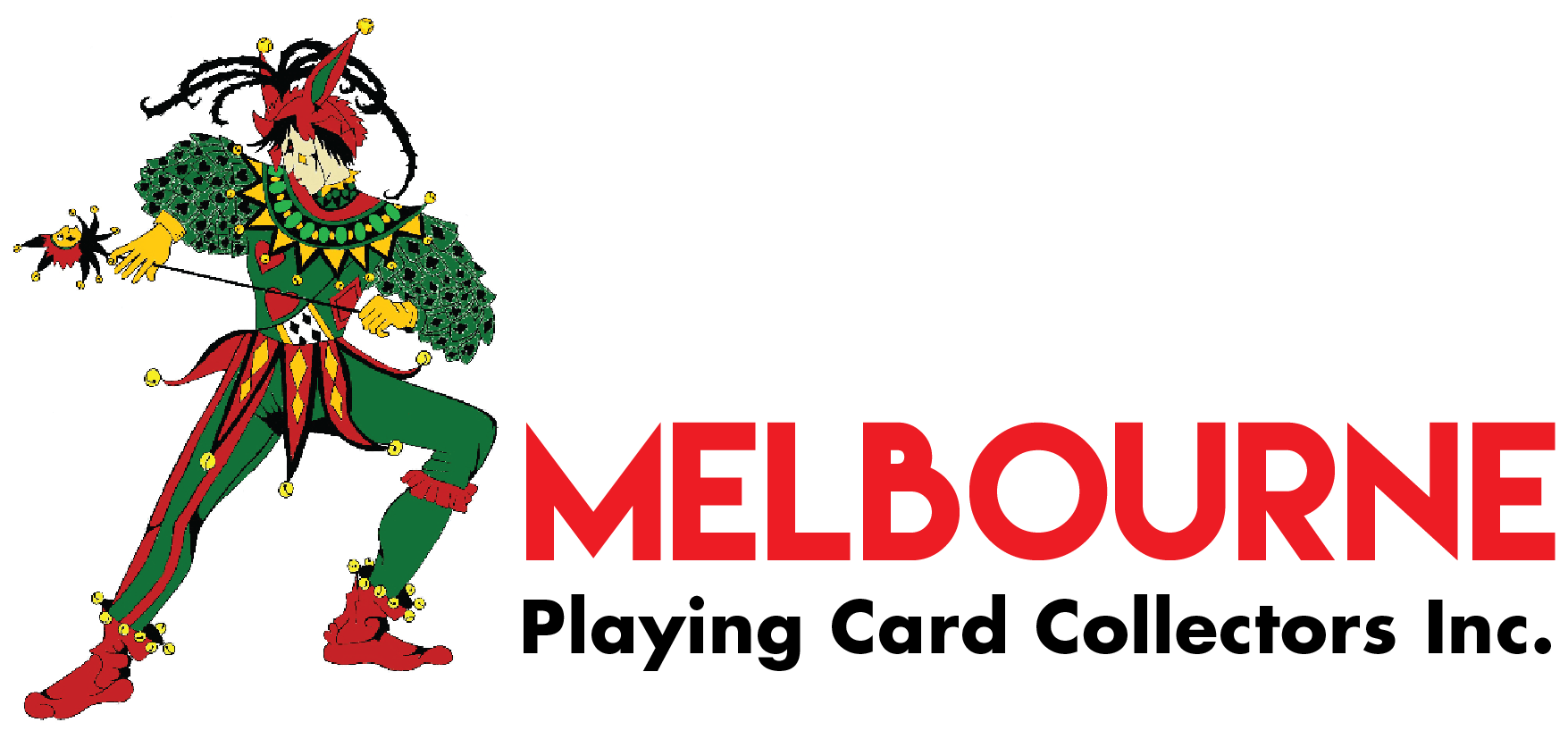Swap / Playing Cards terminology
Again we acknowledge Magpie Cards for the wonderful description that they have provided to identify cards that you may be looking for to add to your collection.
Pre 1920 – Wide
This description refers to cards that are not the standard 6cm x 9cm playing card size. All playing cards manufactured before approximately 1918 were done in a wider format (6.5 x 9 cm). These were designed to fit a gentleman’s hand as most card players were men. Square corner wides are cards cut without the corners rounded off and are usually the older of the wides as the rounded corners came in the later 1800’s. Modern Poker cards are also referred to as wide
Post 1920 – Narrow
These cards were produced around the 1920’s due to the popularity of new card games for women (especially bridge). The 6×9 size cards (sometimes referred to as narrows) were better suited for holding in a lady’s hand.
Linen finish
Refers to the type of textured paper used to make the playing cards. Linens were a sign of superior quality cards which is why they are sought after by card collectors. Herringbone Linen finishes are quality playing cards manufactured in England with a hatched herringbone appearance. These are also referred to as pneumatic finish. It is interesting to note that some cards described as Linen finish may only have the design on one side of the card as a result of uneven pressure with the presses.
Artist signed
Refers to the artist who originally designed the image on the card. Popular and sought-after artists are William Barribal (produced a wide variety of themes like birds, flowers etc but most known for his deco ladies). Maxfield Parrish who did a series of stunning art deco and art nouveau images many featuring ladies. Alberto Varga, Rolf Armstrong, McPherson and others were famous for their sexy pin-up girls. Popular modern artists are Thomas Kinkade – The Painter of Light was famous for his beautiful scenery, Gladys Emerson Cook and Giordano have many animal designs, mostly dogs, cats and horses and we will alswys be eternally grateful to the artist who drew Sarah Kay for such a wonderful collection of natural, children designs
Named
Refers to cards with a printed title. These are wide or narrow and come in pairs and/or sets. There are catalogues put out by the various worldwide swap card clubs (USA and Australia the main two) and these list all known cards with printed titles by each manufacturer. There are American named (also called USNN for US Narrow Named), English named and Australian named cards. Cards that have the same design or picture as a named card but without the title are referred to as un-named cards.
Blank backed
Can be either playing card extras (designed to be used as a spare if a card was lost or damaged) or trading cards. These are usually the same size as a regular playing card (or slightly smaller) and do not have card suits printed on the back. Many of these originated in the 1950’s in the USA and Australia and were sold as singles or in small packs. c1950’s Australian cards were made for Coles or Woolworths by Hudson Industries and are highly collectable. Later productions were by Greythorne and Tassell, Hudsons, Valentines, John Sands etc in the 1970’s.
Catalogue listed
There are catalogues put out by the various card clubs and these detail all the KNOWN cards in a particular set or theme. These catalogues can be purchased from the Australian, English or American card clubs and generally show pictures of most of the cards and their relevant pairs or sets. Examples of catalogues are USNN (US narrow named), Wides (named and un-named),Artists, English named, Australian (named, un-named), Barribal, Coke and Soda, Coles, etc.
